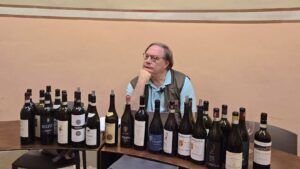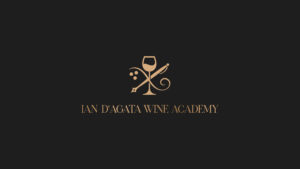At the heart of Côte de Nuits, Chambolle-Musigny is regarded as the village that produces the most “feminine” wines in the Côte de Nuits, something that is especially true of the southern reaches of the Appellation. But most of its wines are renowned for their lightness, delicacy, ethereal aromas, and silky tannins. Between the sanctity of Vosne-Romanée and the power of Gevrey-Chambertin, Chambolle-Musigny stands apart with its elegance, representing the “poetic core” of the Côte de Nuits style spectrum.
I recently attended a dinner centering around a comparison of Chambolle’s Premier Cru terroirs, with five flights of contrasting wines. Through the examination of different producers, vintages, parcels, and winemaking philosophies, we dove deep into the surprising complexity and coherence of this small region, which presents an impressive range of nuances as a result of terroir variations and human interpretations.

The Appellation’s structure
Chambolle-Musigny is a renowned village in the Côte de Nuits of Burgundy, located in the Côte d’Or region. While its geographical area is relatively small (179 hectares), it houses a large number of high-quality vineyards thanks to unique geological and climatic conditions. Chambolle-Musigny has two Grand Cru vineyards, Musigny and Bonnes-Mares, which occupy approximately 26 hectares. These two Grand Crus are considered some of the most prestigious and valuable vineyards in the world. Musigny, in particular, is regarded as one of the top red wine producing areas in Burgundy, characterized by wines that are highly sought after and possess great aging potential. There are also 24 Premier Cru vineyards covering approximately 61 hectares. These Premier Cru vineyards represent some of the village’s and Burgundy’s most valuable and famous vineyard plots (for example, most knowledgeable wine lovers and experts consider the Les Amoureuses Premier Cru to be worthy of grand cru status), but most of Chambolle’s Premier Cru vineyards deliver wines that are typically of high quality with excellent aging potential. The soils and terrains of the Premier Crus are distinct, and through meticulous management and winemaking techniques, they express a wide range of flavors.
The vineyards of Chambolle-Musigny are situated at altitudes of 250–300 meters, rooted in Jurassic white limestone bedrock, with soils mainly consisting of gravel, ensuring excellent drainage. The village is surrounded by two valleys, La Combe and La Combe d’Orveaux, which provide good ventilation and temperature variation between day and night. This creates favorable conditions for the accumulation of aromatic compounds and optimal ripening of tannins. The harmonious interplay between the geology and climatic conditions help give the light, airy structure of Chambolle’s wines, while at the same time blessing them with concentrated and pure aromas, fine tannins, and tension. Clearly, there is always a tendency to qualify wines from prestigious domaines with a higher “terroir authority”. However, in challenging vintages such as 2011, the wines do not always demonstrate the concentration or depth expected from what are Premier and Grand cru sites. This is not a negation of an individual estate’s quality but a reminder that balancing terroir, vintage, and winemaking philosophy is far more important than any name on a label, be it of a specific vineyard or winery. While over the last decade or so there has been an unfortunate, progressive tendency to overrate and score wines too highly in many writing circles, and especially so with Burgundy’s wine, it needs to be remembered that wines should be evaluated within the context of their terroir and vintage, independently of how famous the vineyard or the winery are.

The four vintages of the wines described in this report
The 2020 vintage is one of the most representative vintages of Burgundy in recent years. It had a warm and dry growing season, with an early harvest, resulting in healthy fruit and excellent phenolic maturity. Compared to the warmer years of 2018 and 2019, 2020 stands out for its precision, clear acidity, and expressive structure. The wines from this year typically exhibit prominent red fruit characteristics, delicate tannins, and lively acidity, showcasing both maturity and tension. The winemaking philosophy and harvest timing ultimately determine whether the wines lean toward a lighter, more compact profile or a rounder, fruit-driven style, making it an ideal year to explore stylistic differences (as is always the case in cooler years compared to the hot ones in which terroir-based nuances are often blurred).
The 2017 vintage was a classic, typical vintage with wines of medium structure and bright fruit aromas. Compared to the richness of the 2015s and the tension of the 2016s, the wines of 2017 leaned more towards elegance and approachability. The warm spring and uneventful harvest period allowed the fruit to ripen evenly, producing wines that are marked by bright red fruits, clear acidity, and delicate tannins. The overall structure is medium, with mostly clean and pure wines, making this a vintage of “clear expression” and wines ideal for mid-term drinking.
The 2011 vintage was a complex and challenging vintage for Burgundy. The unusually warm spring led to early flowering, resulting in an earlier growing cycle. However, summer rains and hailstorms increased the risk of grape diseases like grey rot. To mitigate these issues, many growers chose to harvest earlier, even though the fruit may not have reached optimal ripeness. This strategy helped maintain grape health but could impact the wine’s complexity and aging potential, with some wines showing a green taste because of tannins that had failed to reach full polyphenol maturity. The better Burgundy reds from 2011 typically exhibit bright fruit aromas, moderate acidity, and soft tannins, with a lighter and more approachable style. However, some wines may lack depth and complexity, with limited aging potential, and, as mentioned, some are marred by green streaks. Overall, 2011 reds from Burgundy are best enjoyed in the short term, such to highlight their fresh fruit flavors and elegant frames.
The 2002 vintage is one of the rare classic really good, even great, vintages of the early 21st century and is often underrated by some wine aficionados. The year experienced stable weather, with a warm, dry summer that allowed for even and healthy grape ripening. Harvest timing was ideal, and the fruit was of excellent quality, with good acidity and structure, and minimal major disease interference. Red wines from this vintage show pure, clear fruit flavors, elegant and generally fuller structures than usual but without being showy, lively acidity, and fine tannins. Particularly in Chambolle-Musigny and Vosne-Romanée, 2002 provided wines with excellent balance and aging potential. Currently, the 2002s are drinking beautifully, with full aromatic development, softened structures, stable flavors, and distinct layers—making it an exemplary vintage for understanding the intersection of terroir and time.

The wines in this tasting report
This dinner tasting offered a rare opportunity to compare wines from various Premier Cru sites within Chambolle-Musigny, highlighting the intricate relationship between terroir, vintage, and winemaking philosophy. Despite the village’s modest geographic size, the diversity of soil types, topography, and microclimates gives rise to a remarkable range of styles and expressions, from the muscularity of Les Cras to the haunting elegance of Les Amoureuses.
Through four vintages—2020, 2017, 2011, and 2002—we observed how climatic conditions shaped the articulation of site: 2020 delivered clarity and structure; 2017 revealed poised elegance; 2011 posed challenges that tested the winemaker’s precision; and 2002 demonstrated timeless balance and fidelity to place. These wines underscore the fact that terroir is not static, but rather, a dialogue between nature, human choice, and time.
Ultimately, the greatest expressions from Chambolle-Musigny are not merely technical achievements or historical inheritances. They are finely tuned responses to specific places in specific years, revealing how geology, climate, and thoughtfulness in farming and vinification come together to form wines that are at once intellectual, emotional, and enduring. All the wines were tasted in Shanghai in March 2025.



